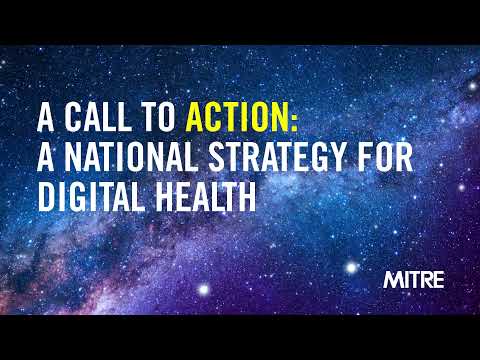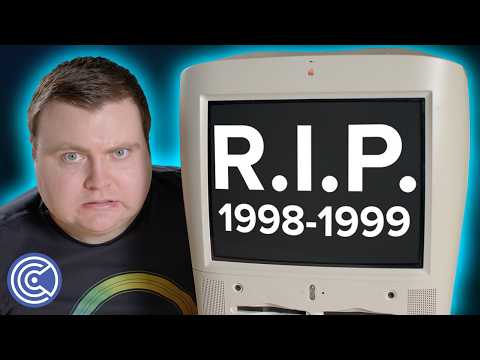A Call to Action: A National Strategy for Digital Health

- Thank you for joining us today. I'm Dr. Jill Egeth and I'm the Managing Director of the Health FFRDC's Healthcare Delivery and New Opportunities Division. I'm here today with a team of my MITRE colleagues, to introduce you to some of the key elements of the draft national strategy for digital health that MITRE published in May of this year. During today's conversation, we're going to describe the purpose and vision for the national strategy for digital health and share an overview of each of the six strategic goals describing the current and future state of each goal and the supporting objectives for each goal.
The team of people who are here with me today were key leaders in the development of this perhaps strategy. You'll be hearing from Cheryl Austein Casnoff, Mary Lowe Mayhugh, Dr. Francis "FX" Campion, Brendan Smith, Jay Walonoski and Dr. Dawn Heisey-Grove. Our shared COVID-19 experience over the past year and a half, along with our experiences serving as technical and domain experts with the health FFRDC generated a lot of internal discussion at MITRE. 2020 really found us at a health and a public health inflection point and we saw the need for a coordinated national approach, which we don't currently have to thoughtfully leverage digital technologies, advance health, and prioritize health equity. At the December, 2020 meeting with MITREs health advisory committee, which is a group of external experts convened by MITRE to guide the FFFRDCS that we operate, we discussed ideas to leverage digital technologies for a transformed national health ecosystem.
We all agreed that strengths and gaps were brought to the forefront by COVID-19 and that we can and must apply lessons learned. And that digital health, if properly instantiated is fundamental to the future of health equity. the committee recommended that MITRE move forward on drafting a national strategy to lay out a set of strategic priorities, to align and coordinate efforts across the public and private sector. We started working quickly and in April of 2021, we briefed a draft version of the strategy to the health advisory committee and to a group of government guests.
They endorse the strategy and recommended that we take prompt action to share it with federal and other stakeholders. In May MITRE publish the strategy as a draft document along with a request for feedback, because we know that any strategy requires stakeholder feedback to be successful. We are actively seeking comments, recommendations and questions. Based on feedback that we've already received, we do plan to release a new of the strategy most likely this winter and that new version will have a stronger focus on the social and political determinants of health. So we hope to hear from you, you can connect with us at DigitalHealth@mitre.org.
We'd love to hear your feedback, we are actively incorporating feedback into the next version so do reach out to us. A quick overview of the strategy before we turn things over to my colleagues. There are six goals of the strategy, addressing, equity, sustainable health workforce, empowering individuals, interoperability, public health, and governance. And we also had a set of guiding principles that we kept in mind during the development of the strategy. Those guiding principles are that we must empower the individual, every community and every person is important. We must collaborate and connect.
The end goal of anything that we do is improved health and wellbeing. The system must learn and adapt. We must make recommendations that ensure privacy, security and accountability, and we must be bold.
And with that, I'm gonna turn things over to Cheryl Austein Casnoff, who will share an overview of our equity focused goal. - Thank you, Jill. And my name is Cheryl Austein Casnoff I'm the Director of Health Policy and Analytics at MITRE, and I'm going to talk about goal one. Goal one really is talking about access, affordability and utilization of broadband for all Americans and a day doesn't go by that you don't care about broadband, and we've learned so much during COVID about the importance of broadband, not only for healthcare, but for education and for our jobs and just for our day-to-day lives. So this particular goal calls for national broadband plan, and there's a lot of activity right now about increasing funding for broadband, but we really wanna make sure we do it in the most effective way, and that we're able to serve all individuals in this country with broadband.
And that really leads to the second objective, which is that we've got to make sure we understand who currently has broadband and whether they have adequate speed and access, and then who really needs it. So we need to do a very rigorous mapping in this country as we continue to invest in broadband. And then we also have to really talk about a government wide approach with adoption and affordability.
We know that it might be technology, it might be broadband, it might be people with phones who don't necessarily have the minutes to be able to use it for things like telehealth. So really being sensitive to who needs it and how we make it affordable to everybody. We also need to define high-speed broadband, one size does not fit all, but we need to make sure that everyone has access to the appropriate tools and broadband.
And then as with so many things we talk about today, we need to assure equity and inclusivity in the design of all these tools. That means persons with disabilities, persons who might be elderly, persons who might not have adequate education to use some of these tools and certainly persons where English might not be their first language. So they need to be involved in designing these tools and understanding how to best use them. And ultimately we need to be able to measure success. And in order to do that, we need to know where we are today and then to really accurately measure the progress we're making and continue to evolve our research and practice to make sure that all people are being served by these absolutely critical tools. At this point, I'm going to turn it over to Francis Campion, who will talk about goal two.
Thank you. - Hi, this is Francis Campion I'm an Internal Medicine Physician and been asked to speak a little bit about the workforce implications for digital health. We know that healthcare and public health are really team sports and that in the coming digital environment, it will require a well trained and knowledgeable people to manage the digital workflow that that will be upon us.
The training that's going to be needed will include individuals at all ends of the spectrum. We'll need the highly trained physicians and nurses and pharmacists, but also the rest of the team on which we rely for everyday clinical practice. So the medical assistants, the greeters, the individuals that work in laboratories, et cetera, throughout the health system will all need to be coordinated the digital platforms that we'll all be dealing with. And just a reminder that the workforce needed extends well beyond the healthcare delivery workforce. We do wanna include the public health workforce that we'll be receiving data from in some cases, the health systems, but also from other sources. As we've seen during the COVID pandemic, the data that's needed to understand where disease is and how it may affect our communities comes from a wide variety of sources.
We also know that part of our digital ecosystem requirements are the software developers, and that software developers need orientation toward health applications, certainly aspects that relate to privacy and security are going to be critically important So we need a wide and deep up scaling of knowledge about digital methods and patient privacy across the digital health ecosystem. This is gonna require modernization of our post-secondary education requirements. There are many opportunities here to leverage both local state and federal funding as we think about the development of professionals, physicians, nurses, et cetera. The goal was really to also expand and make possible these career opportunities across diverse socioeconomic backgrounds. This is critically important for success of not only a functional workforce, but acceptance by the patient population and by society at large. We need to support model programming for education.
We know that it's common in the healthcare and public health care space for there to be leaders in new methods and innovative modes of delivery and digital health certainly is a great example for that. So model programming that includes some federal funding, some government funding and also foundations. And the goal here is to not only foster the progression of digital health, but to make digital health part of the way forward from a leadership perspective. So we need to be helping the best and brightest to become leaders in digital health policy and digital health applications. So with that, I'm gonna turn it over to Brendan Smith, who's gonna take us in the next goal.
- Thank you, FX. I am Brendan Smith, Software Systems Engineer at MITRE. Synchronous and asynchronous digital health capabilities are redefining the delivery of health care. The recent pandemic thrust virtual health into the forefront as inpatient healthcare services closed or reduced intake. As a nation slowly emerges from the pandemic there are lessons to be learned and an opportunity to advance the practice of digital health in ways that put the individual at the center of the health ecosystem.
Goal three of our digital strategy is about empowering individuals, enabling them to manage their health safely and securely, ensuring they have the ownership and control of their data and possess efficient digital health literacy to use the data. To accomplish this goal, we present the following objectives. First, ownership and control of digital health data.
Individuals must have access to in control of their personal health data. Second, it's crucial that individuals have the necessary literacy to understand and use digital data, but this, we intend to create national action plan to improve digital health literacy. Third, we need to understand the absolute and relative impact of digital healthcare delivery. So it's important to invest data and research to quantify, improved quality and outcomes and in-patient engagement tools to help ensure value-based care. Forth, virtual care will not replace traditional in-person care in the foreseeable future. A reasonable use template will identify the appropriate mix of in-person and virtual care based on best practices for optimal utilization and high quality care.
Fifth, develop data-driven models of the effect of reimbursement changes on access, quality and cost within fee for service and value based care delivery and payment models pre-digital modalities. Six, state licensure statutes and other requirements such as state scope of practice laws and facility privileging processes can inhibit care delivery and increased cost, especially for rural providers. We'll analyze changes in cross state life insurance, scope of practice and emergency privileging approaches during the pandemic. And lastly, precision medicine is revolutionizing, how we can improve health and treat disease.
Its goal is to empower healthcare providers to tailor treatment and prevention strategies to individual's unique characteristics. And that is an overview of goal three. And now I turn it over to Jay Walonoski for goal four interoperability. - Thank you, Brendan. Hi, I'm Jay Walonoski. I'm gonna talk to you about goal number four, Health Interoperability.
This goal is all about standardization, standardizing the data, standardizing the APIs, standardizing the metrics and standardizing the algorithms. For standardizing the data, we have some specific call-outs to establish a unique national patient identifier. We echo the goal from goal three to establish patient data ownership loss, and we make a recommendation transitioned to standard open terminologies. Now sub goal two standardizing the APIs is about transitioning to a common open API for all use cases, logical front runner here being HL7 FHIR.
After that standardizing the metrics. Once we standardized the data and standardized the API, we can standardize quality and performance measurement and how we report these metrics. And then finally standardizing the algorithms. This is about establishing consistency and standards for the delivery of clinical care and a standard way that is equitable. So standardize the data, the APIs, the metrics and the algorithms that's goal four for health interoperability.
Now I'll turn it over to Dawn Heisey Grove to talk about goal number five. - Thank you Jay. So goal number five is about modernizing our public health digital ecosystem. And we break this down into five objectives. The first is really about fixing how we fund our public health infrastructure and technology. Currently, we spend very little money on public health and most of the funds that are directed towards technical infrastructure are focused on disease specific or condition specific funding or even programmatic funding.
And we really need a more holistic approach to our funding strategy that looks out at reuse of existing infrastructure and also supports modernization and maintenance of existing systems so that we break the siloed systems that we currently have, and really look to making sure that public health is using the most current and modern infrastructure that they can access. Objective number two is really about providing a new governance entity to make sure that objectives one, three, four and five in this particular goal can be moved forward. And this governance entity would be a collaboration between public health, health IT and health care organizations and representatives.
And some of its first responsibilities would be to review and approve requests for non standard data elements that public health may need to use. What we've seen currently in the past is that many jurisdictions that are supporting electronic exchange of information with healthcare or other entities have made small tweaks to standards that make them no longer standard. And so hopefully by having process in place and bringing an entity on board to help support this, we can better standardize the use of those information exchanges across the country. The other thing that we would hope this entity would do right off the bat would be to help work with these organizations and entities to streamline data sharing agreements so that it's easier to move those data back and forth between those entities.
Objective number three is really about making sure that all of our jurisdictions across the country with state, local, territorial and tribal have equitable access to the right tools and technology and the staff to use it. So right now, there are huge differences and disparities between jurisdictions that have a lot of funds and many, many staff and staff skilled in using those technologies and jurisdictions maybe in rural areas and small communities that may have older antiquated systems that can't even exchange information and limited staff who know how to upgrade and use our systems. So this objective is really about exploring opportunities for shared services and shared skilled technologists to support that that's innovation within those jurisdictions.
Objective four is really about up-skilling the staff in the jurisdictions on standards and making sure that public health representatives are equitably represented on standards bodies so that when standards new are developed or involve the public health folks have a voice at the table so that the standards work for public health, as well as for the other types of entities that are using the standards. And then finally, objective number five is about getting the right data to public health and making sure that those staff were using this data or the organizations with organizations that are using them the right skills to use the data. But it's not just the traditional data sets that we need to be thinking about, but how do we move public health use of data to more innovative and novel resources. And so really up scaling our staff to think about data science as a resource and making sure they have access to those data. This objective also includes our need to reconsider how we think about HIPAA to support that innovative use of data moving forward. So that is goal five in a nutshell, and I'm now going to turn it over to Mary Lowe Mayhugh to speak through goal six.
- Thank you, Dawn. I am Mary Lowe Mayhugh, Principal at MITRE Corporation. Goal six is about governance. As we think about governance, it's important that we take an integrated approach that is designed to deal with the challenges of the digital health ecosystem.
If we look at the current state of a governance, it's fractured, lacks clear roles and responsibility for stewards of health data, and lacks clearly defined mechanisms for enforcement of what minimal protections do exist. The current state of governance does not fully account for the breadth and types of data generated nor consider the evolving technical infrastructure and disparate needs of the diverse stakeholder groups, including consumers. In order to address these issues we have proposed six recommendations.
First and foremost is that we must declare digital health a national priority. Such a declaration would help align the government and private sector initiatives and lead to a comprehensive and transparent approach towards governance. Secondly, there would need to be an entity established through an executive order or legislation that would be responsible for creating and managing the governance structure. It would include representatives from government agencies, the private sector and academia. It would be responsibility for defining the explicit roles, rights and responsibilities that promote accountability, ethical use of data and the appropriate data protections that need to be in place to develop a trusted system.
But next, that particular group would need to develop actionable guidelines that can drive ethical stewardship of the digital health, and taking those guidelines and begin to turn them into an operationalized guidelines that can build upon institutional knowledge and improve the ethical use of data. And finally taking those guidelines and turning them into law that would need to be harmonized across all levels of our government, including local, state, national as well as tribal nations and territories and the private sector. And with that, I would like to turn it back over to Dr. Jill Egeth who will make closing comments. - Thank you, Mary Lowe.
Thank you for joining us today. We've posted materials available for you on our website. You can access a copy of the strategy at health.mitre.org and if you have feedback or questions, we would truly love to hear from you.
Send us an email at DigitalHealth@mitre.org. Thank you.
2021-08-24 10:53


